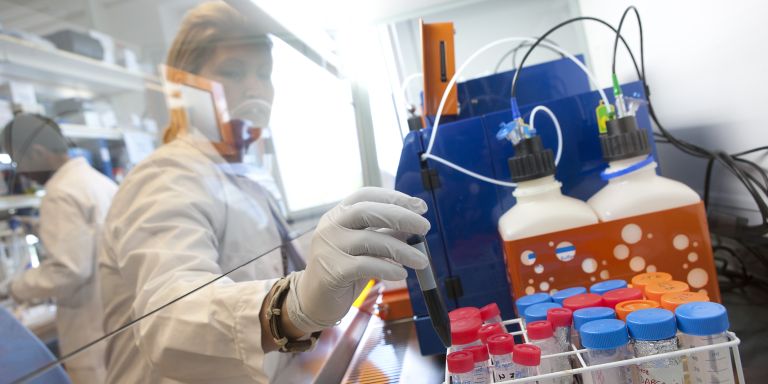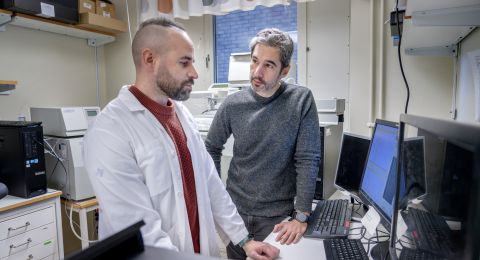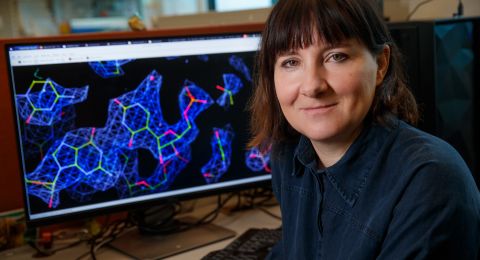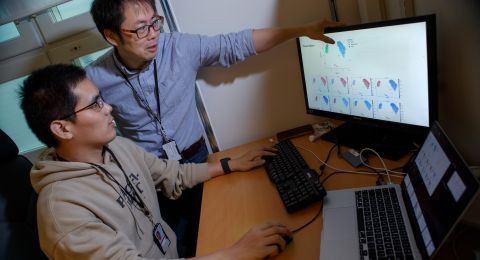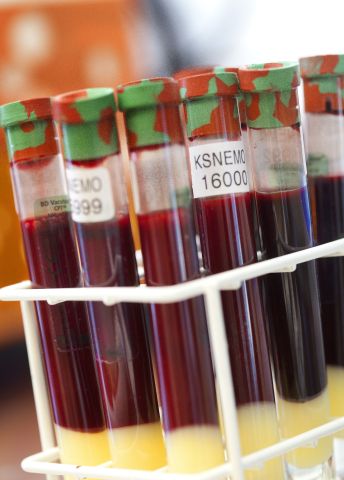
Project Grants 2011
Autoimmune Diseases
Principal investigator:
Tomas Olsson, professor of neurology
Co-investigators:
Jan Hillert
Ingrid Lundberg
Marie Wahren Herlenius
Rikard Holmdahl
Lars Klareskog
Vivianne Malmström
Johan Grunewald
Per Johan Jakobsson
Institution:
Karolinska Institutet
Grant in SEK:
57 million over five years
Autoimmune diseases is a collective name for diseases caused by the body’s immune system attacking the body’s own tissue. Almost all organs in the body have their own autoimmune disease. In MS, multiple sclerosis, it’s the central nervous system that is attacked. In rheumatoid arthritis, RA, it’s the cartilage in the joints that is broken down. In type 1 diabetes, it’s the insulin-producing cells that are affected. A new example is the disorder called narcolepsy.
“For some reason, small parts of the immune system that is supposed to protect against infections have mistakenly turned against the organ’s tissue. If we count all autoimmune diseases, between five and ten percent of the population is affected,” says Tomas Olsson, professor of neurology at Karolinska Institutet.
There is still no treatment that cures the diseases, although research has taken great strides over the last 15 years. Back then it was possible to reduce the disease activities by roughly 30 percent in MS patients; now there are treatment methods that can alleviate the disease up to 70 percent. There has been a similar development regarding rheumatoid arthritis.
“The problem with the treatments is that their impact is too broad, which can cause other diseases and troublesome side effects. We hope the project will provide us with new knowledge that can lead to more targeted treatments,” says Tomas Olsson.
Smoking – a triggering factor
Together with a research team comprising various competencies, he is attempting to map both genetic factors and factors in the patient’s environment and lifestyle that contribute to the onset of the disease. MS and rheumatoid arthritis are the focus of this research because the diseases are similar in their development.
“In all autoimmune diseases, certain risk genes are involved. They are normal genes that don’t cause the disease but increase or decrease the risk of developing it. Together with certain lifestyle and environmental factors the risk can increase further, but taken together this doesn’t explain all cases. Sometimes it seems to be a matter of bad luck.”
Tomas Olsson explains that in identical twins the risk of contracting MS is 30 percent higher if one of the twins has the disease. The risk for fraternal twins is only two to four percent higher than normal. One significant gene in this connection is the HLA gene, which elevates the risk of developing the disease by a factor of five. This gene has been shown to be involved in all autoimmune diseases.
“If you also smoke, the risk of developing MS increases is 20 times higher, an increase of 2,000 percent. Also for RA, the HLA gene combines with smoking to increase the risk dramatically.”
Unique patient registries and biobanks
Multiple sclerosis is one of the most common neurological diseases in young adults. Some 2.5 million people have the disease worldwide. The disease is more common in the Nordic countries than in the rest of the world. In Sweden there are about 17,000 people with MS, with 600 new cases each year.
The scientists in the project have a great advantage vis-à-vis other researchers because they have access to a comprehensive database containing information about genes, lifestyle, and environmental factors that has been gathered from thousands of individuals.
“I think I can say that we have access to the world’ best material, with comprehensive information on life habits and exposure to external factors. Moreover, we have gathered blood samples from everyone. This gives us huge advantages when it comes to finding shared risk factors,” says Tomas Olsson, adding that the registry is now going to be expanded to include material from as many patients as possible.
And this will be needed, because autoimmune disorders have often been regarded as mysteries. Tomas Olsson points out that it’s a matter of solving hundreds of riddles, not just one.
“In both MS and rheumatoid arthritis there are some 100 genes, besides the HLA gene, that each impact the risk somewhat. Previously there was some speculation that inflammations of tissue are secondary, caused by something else. But as it has now been determined that it’s almost only immunological genes that entail a risk of developing the disease, we can maintain that it is the immune system that primarily attacks the tissue. This means that these mechanisms should be targeted as precisely as possible to stop the development of the disease.”
The project is also developing animal models.
“By testing treatment methods on mice, we hope to find methods that can be transferred to humans. Perhaps we will find that we can use peptides to cure autoimmune diseases in a way similar to how we use and are further developing hyposensitivity treatment of allergies today,” says Tomas Olsson.
Text Carina Dahlberg/KAW
Translation Donald S. MacQueen
Photo Magnus Bergström
Lifestyle and environmental factors that impact MS
Sunlight – vitamin D – has a protective effect. Those who spend a lot of time in the sun run a lower risk of contracting the disease.
Factors that increase the risk:
- Glandular fever
- Working a night shift (before the age of 20)
- Overweight (before the age of 20)
- Smoking – also relevant for rheumatoid arthritis
